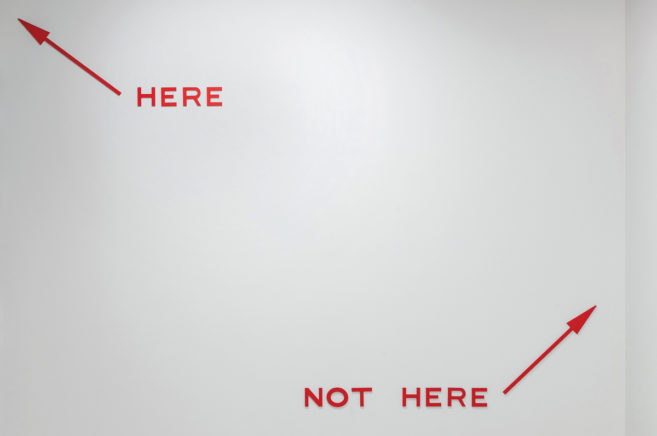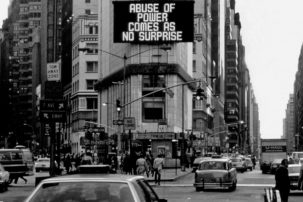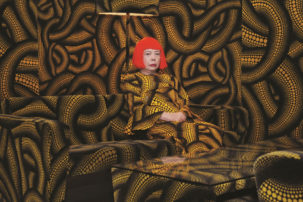I do not think it is much of a secret that artists are a conflicted bunch when it comes to competitions—or even competition for that matter. On one hand, many in the field are quick to publicly lament the competitive atmosphere that swirls around just about every aspect of artistic production today, viewing the mindset as either one that perpetuates a false sense of an art meritocracy, reaffirms an evil capitalist economic model, or just plain undermines that fuzzy project we might call, for lack of a better phrase, aesthetic emancipation. On the other hand, even the most vocal critics of “the system” are themselves inextricably caught within this web of artistic supply and demand: quick to apply at every opportunity for grant money and even quicker to protect their space in the pecking order of their gallery’s stable. Of course, opting out really isn’t an option anymore. The increasing professionalization of the discipline, years of ever-diminishing budgets in the cultural sector, rampant commodity speculation in some quarters, and just too many damn artists for too few spaces have all contributed to an environment where winning might not be everything (or even necessarily something), but it sure as hell beats nothing, because nothing is, well, nothing.
Being an artist in Canada likewise has its own particular charms. They include, in no particular order: a lukewarm (okay, more luke than warm) market for the visual arts; a general consolidation of what market there is for art to a half dozen cities (okay, more like three or four) spread out across thousands of kilometres; a post-secondary system that continues to pump out thousands of bright-eyed young artists every year, most of whom are saddled with significant debt for the privilege of studying to be professional artists; and the long-held and much-cherished fallacy that government funding agencies could always be counted on to social-engineer any inequities out of our peculiar system. Packaged together, the result is at best daunting, and speaks to a near desperate need for “angels” these days—less the winged and haloed variety (though God knows we could always use them too) than the type who make sustained and strategic investments into the heart of the art community, locating specific need and actually making a measurable difference in the lives of individuals.
Of course, visual arts angels come in a variety of forms and carry with them a host of diverse interests. Some are committed to protecting our houses of culture and history through our museums and public galleries. Others, through their foundations and privately funded grants, seek to actively engage and collaborate with artists as change-agents, while still others commit key resources into the education of artists through our universities and art colleges. And make no mistake, there is certainly more than enough need to go around! Occasionally, however, a gift or a sponsorship agreement succeeds in hitting the proverbial bull’s-eye, making a real, tangible and identifiable difference in the lives of the people it targets and netting a cultural return worth many times the initial investment.
Enter the RBC Canadian Painting Competition (under the leadership of Robin Anthony, art curator at the Royal Bank of Canada, and administrator Deborah Dexter), which turns 15 this year. As awards in the visual arts go, it has become—along with the prestigious Sobey Art Award—arguably the most anticipated, and certainly the most lucrative, of its kind that is focused on young practitioners in Canada. It neatly brings together the Royal Bank’s commitment to collecting contemporary Canadian painting with a desire to create opportunities for young artists at a pivotal point in their careers. The award focuses on—and is restricted to—a five-year window of production, measured from the date of the artist’s first professional exhibition. As a result, the bulk of the artists who apply each year are individuals just a few years out of school—the ones carrying all that debt, trying to make ends meet while fighting to get just a bit of well-deserved attention for their work. The actual process goes something like this: artists apply with up to three images to one of three regional juries: East (Quebec and the Maritimes), Central (Ontario), and West (Western Canada and the Territories). Each regional jury is comprised of three distinguished artists, curators, writers or gallerists (with the constitution of the jury changing yearly), who collectively sift through the piles of applications and come up with five finalists. A total of 15 finalists from across the country—each artist represented by a single work—are then assembled for a special exhibition (this year at the National Gallery in Ottawa) where the nine regional jurors select a national winner and two runners-up. And the stakes are high: the National Winner and two Honourable Mentions each receive a purchase prize of $25,000 and $15,000 respectively (and the works become part of the RBC corporate art collection). Additionally, this year, in recognition of the 15th anniversary of the competition, the other 12 finalists received $5,000.
In philanthropic circles, donors often speak about the potential impact of a gift, or how one might actually measure if a gift is making a difference in peoples’ lives. Well, it might be complicated in some circles, but I can say with some certainty that in the case of the RBC Canadian Painting Competition, the proof is obvious and irrefutable. As an artist and writer, as a previous RBC juror, and as someone who has had the good fortune to know and work with a significant number of the RBC Canadian Painting Competition winners through the years in my capacity as a director of an art school, I have had the opportunity to witness firsthand how pivotal this award has become in the lives of young Canadian painters. It is hard to put into words the positive impact such recognition has on the young artists lucky enough to participate as finalists in the yearly exhibition. I have seen almost total unknowns, fresh out of school, launch significant careers on the back of a single RBC award. I have watched as many of these young artists, who only months before had little hope of landing a show, were talked up by eminent gallerists quick to snap them up for their stable. I have seen talented young painters, most of them deep in debt, be given an artistic lifeline—perhaps the opportunity to travel to an exhibition in Europe, or a year’s rent on a studio through prize money—and have watched as talented young artists are given a rare kind of respect, public acknowledgement and social fêting by the bank that, sadly, most may never experience again. But perhaps above all, I have seen 15 years of new artists, new art and new ideas circulate across the country by way of each year’s finalist pool. And truly, the proof is in the pudding: the list of RBC finalists over the past 15 years is a veritable who’s who of new Canadian painting. Indeed, it is so good and so rich that I’m not going to even attempt to list all the names, in fear of missing someone significant!
But, going back to my initial premise—that artists have a somewhat complicated relationship with competition. It goes without saying that the RBC Canadian Painting Competition is, like any other award competition, also a lightning rod for certain disgruntled parties, specifically for those who: (a) didn’t get in; (b) don’t like painting; (c) don’t like the process; (d) are absolutely convinced the jurors are wacko; or (e) think the money could be better spent somewhere else to help the visual arts. I am happy to address these sour grapes in order:
(a) Didn’t get in. If anyone has devised a better system to ascertain artistic quality than a jury of knowledgeable and seasoned professionals from within the field, I have yet to hear about it. Jurors make compromises, and yes, occasionally a jury might have certain proclivities or even make a mistake. The beauty of the RBC competition is that an individual artist can apply for five years, which means five totally different juries considering your work, which seems more than fair. If you are still convinced that all the jurors have it against you, I would suggest that you are probably paranoid and should seek help.
(b) Don’t like painting. Cool, I don’t like a lot of self-indulgent video art, either. But this is about alignment. The RBC awards perfectly align with the bank’s interest in and commitment to contemporary Canadian painting. I think they call it “synergy.” And from my calculations, and despite rumours to the contrary, there are still a hell of a lot more painters out there than anything else, so more people get to feel the love.
(c) Don’t like the process. The jurying of and emphasis on an individual work, as opposed to a body of work, may not be everyone’s cup of tea, but it does provide for a more objective and cleaner process for all involved. Young artists don’t always have an established body of work, and besides, it is a painting competition, not a painters’ competition.
(d) The jurors are wacko. I’m trying not to take this one personally. I would argue that the reality is quite the opposite and, at least in my experience, the deliberations around the RBC winners were extremely thoughtful, serious and even somewhat tense at times. In other words, the jurors felt both a responsibility to, and a certain gravitas in, the decision-making process. As a result, each yearly exhibition is inevitably a small litmus test of the current critical dialogues going on in contemporary painting, filtered through a body of individuals whose job it is to be engaged in the greater discourse. In the end, there is never a perfect show, or even obvious winners for that matter, but only a consensus born of dialogue that in the end is usually right.
And finally, (e) The money could be used differently. There are two major proponents of this argument: mid-career and senior artists who are pissed off that the young ones are getting all of the attention, and those who think institutions are the epicentres of culture and should be the focus of giving. I’m not so keen on the mid-career argument, and the galleries seem to have plenty of adherents already, but I do think senior artists might have a legitimate beef. As a country, it is downright scandalous how poorly we treat our senior artists, many of whom now live in poverty and obscurity, and whose once-significant contributions to Canada’s visual culture are either forgotten or sneered at by the hip young things that run many of our public institutions. But in fairness, why take it out on the young artists, many of whom are just as deserving of a chance (a chance that many of the senior artists were likely once given, don’t forget)? The health and robustness of Canadian visual art has always rested on our ability to give our young artists the opportunity to disassemble and reassemble our prevailing culture. Could we as a country do better for everyone involved? Sure! But unless you have a direct line on a couple of lotteries I should know about, instinct suggests that you will get a better bang for your buck in supporting the potential embodied in younger artists.
In other words, it is all good! Let’s face it: the focus on the work of young artists at a crucial point in their careers, juried by a wide range of experts in the field, presented in major institutions across the country and carrying significant cash awards have together made the RBC Canadian Painting Competition one of the most highly anticipated events in the cultural calendar. It provides us with new voices, new ideas, new art and perhaps from time to time a few new things to argue about. But perhaps more critically, the awards provide Canadians each year with a new cohort of painters who, by way of some much needed funding and a little exposure at the right time, may actually have a chance to flourish as artists. Surely no one loses in this scenario—even the naysayers!
This is an article from the Winter 2014 issue of Canadian Art. To read more from this issue, visit its table of contents. To read the entire issue, purchase a copy on newsstands, the App Store or Zinio until March 14.









